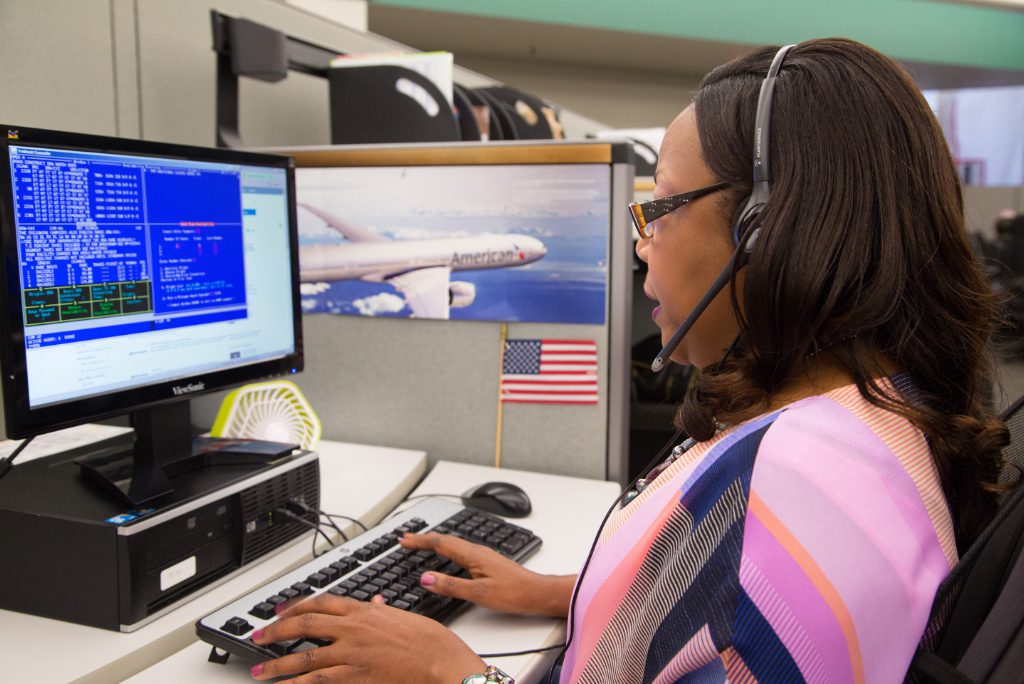New American Airlines Strategy Leaves Agencies With Dramatically Higher Airfares

Skift Take
Corporate travel agencies are now seeing wide discrepancies in airfares after American Airlines overhauled its ticket distribution strategy.
On April 3, the carrier moved 40 percent of its airfares to its “owned channel” (AA.com) as well as New Distribution Capability-enabled channels, and in the process stopping their sale through what it calls third-party legacy technology platforms (that use decades-old EDIFACT technology.) This includes EDIFACT technology and communications through global distribution systems, which most corporate travel agencies use.
However, all three major global distribution systems (Amadeus, Sabre and Travelport) can also now provide access to American Airlines’ New Distribution Capability-enabled fares. Sabre was the last one to join the party, just about, on March 29.
While in Europe several major airlines have already aggressively pushed their direct retailing strategies, American Airlines is the first carrier in the U.S. to move ahead, perhaps reflecting its acknowledgement of fewer pure business trips being flown.
And back in September, American Airlines said that its lower fares would no longer be available through third-party legacy technology channels.
Cheaper Itineraries
Corporate travel agency AmTrav said 35 percent of its itineraries had “lower fares in New Distribution Capability,” with average savings of $164 on those itineraries. For 13 percent of itineraries, the company was finding savings of more than $100, said CEO Jeff Klee in a LinkedIn post on Wednesday
Another agency, DCM Elite Travel Planners, based in Baton Rouge, Louisiana, has also seen big gaps.
It cited flight AA2911 from New York to Chicago as an example. It said only one fare level, Main cabin, was accessible in the “legacy Sabre global distribution system.” Prices were roughly the same across all channels. But First and Flexible fare differences were “dramatic,” the agency said.
First fares were $304 for the Sabre New Distribution Capability ticket, $305 through AA.com, and $483 through the EDIFACT Sabre channel.
Main Flexible fares were 103 percent more expensive in the standard Sabre global distribution system fare, compared to the Sabre New Distribution Capability ticket.
First tickets were 59 percent more expensive, and First Flexible 39 percent more expensive.
The lower fares that can be booked via AA.com or through New Distribution Capability are seen by some agencies as an incentive to encourage more bookings though the channel.
“Whether American’s New Distribution Capability fares remain at a discount to EDIFACT-based fares or level out over time, the bigger opportunities with New Distribution Capability are personalization and a better traveler experience,” said Sarosh Waghmar, founder and CEO of Spotnana.
“New Distribution Capability enables corporations to finally have a seat at the table where they can negotiate the custom bundles they want, and it supports a more seamless traveler experience when it comes to loyalty benefits, exchanges, cancellations, and disruptions.”
Exchange Questions
Another issue being reported is that “old” unused tickets are unable to be converted to New Distribution Capability-compatible tickets. Businesses will often have many of these tickets sitting with their agencies.
“Please give us a way to exchange EDIFACT for NDC. It is a lose-lose — customers are enraged by it which makes them furious at both American and the (travel management company)” AmTrav’s Klee wrote. “We all agree (I think) that it’s best if customers don’t even have to know about the change in plumbing. But the rules on exchanges make that impossible and it ends up reflecting badly on all of us.”
After calling on American Airlines to postpone the changes, the American Society of Travel Advisors is now requesting its agency members to report if they “experience the negative effects of how American’s abrupt transition is impacting consumers (primarily) and your businesses (secondarily.)”
“Smaller agencies are being disadvantaged because the systems that have normally been used for distribution are far less attractive because of pricing,” it said in a statement. “The primary concern is that corporate customers are being charged more because American Airlines is aggressively preferencing its direct channel.”
The price discrepancy come as the UK’s Institute of Travel Management this week set up an emergency distribution taskforce.
“Airfare distribution and New Distribution Capability are currently causing a major issue for many travel managers who are feeling battered by the challenges of airline retailing changes and the impact on managed travel programs,” it said.
The institute added it was not based on buyers’ resistance to change, but the need for transparency around airlines’ motivation, investment roadmaps and partnerships
“New Distribution Capability, airline distribution and modern retailing are causing our buyer members a major headache with some describing it as a ‘mess,’” the organization added.
The institute also told Skift that some of its travel buyer members were looking at what bookings they can shift away from American Airlines, as the uncertainty is more challenging to deal.
“We continue to track global distribution system progress in connecting to airline NDC APIs,” said SAP Concur, the most widely corporate booking and expense tool, in a statement on April 4. “Some still do not yet include important tools that business travelers and travel managers rely on including items such as interlining, code share, Known Traveler Number, the ability to exchange tickets, and key aspects of travel management servicing.”




